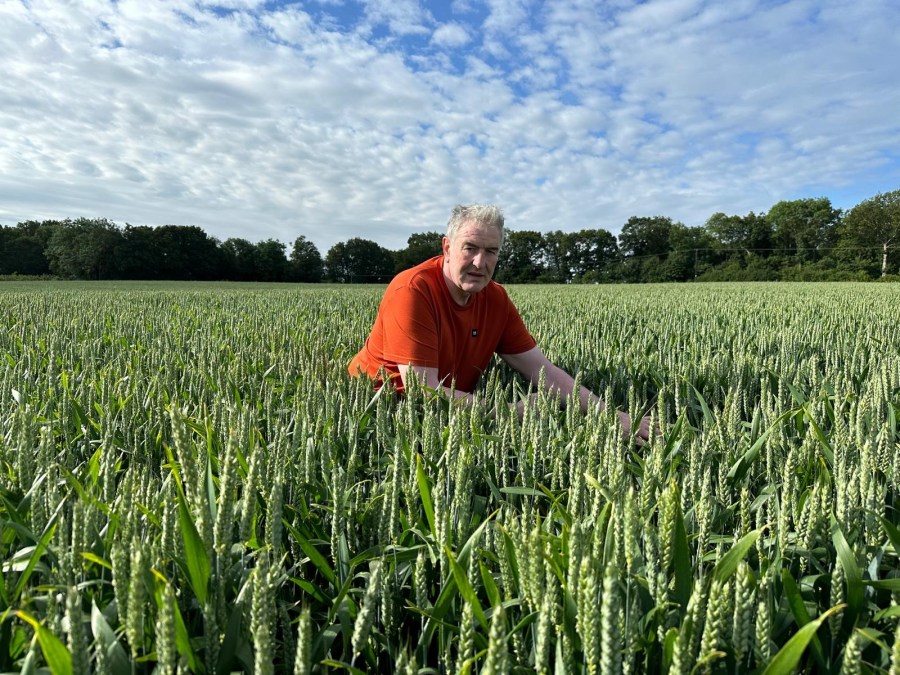With the past two seasons illustrating the value of spreading risk, opting for crop varieties with different parentage may pay dividends, is the message from the trade.
According to Andrew Bourne from T Denne and Sons, this season has been the worst for disease pressure in the South East since 2012. “However, when you analyse the certified seed sales for last autumn – on the back of a bad septoria year in 2023 – 47% of the total winter wheat seed sold was covered by just three varieties.
“It means we likely have a lot of growers with too many eggs in too fewer baskets who aren’t looking at genetic diversity to spread their risk,” he stresses.
A variety which has piqued his interest for this reason is Mayflower (Elsoms), which the company has worked with for three years. “Although it’s not, and never has been, the highest yielding milling wheat, its disease credentials including an 8.9 for Septoria tritici and a 9 for yellow rust have been unfairly overlooked.
“In high pressure disease situations when yields can easily be compromised, varieties such as Mayflower should be a strong choice for growers. Its genetic make-up from French parentage is radically different to other milling wheats on the current Recommended List. With its flexibility on input timings, it’s a lower risk variety for growers,” adds Andrew.
Farmer viewpoint
West Kent farmer Will Thompson from the Brattle Farm Partnership primarily grows milling wheats and agrees with Andrew’s viewpoint. “We first spotted Mayflower in trials in 2022 a few months before it went onto the RL. We liked its early drilling flexibility, it looked very clean – supported by some impressive disease resistance scores – and had a relatively good specific weight.
“In the last week of September that year we drilled 130ha of the crop as a first wheat into our predominantly heavy clay soil and it established well, showing decent early vigour. Despite its robust profile, we took a belt and braces approach on inputs and were rewarded with a crop that remained noticeably cleaner through a high pressure septoria season than all our other key wheats,” he explains.
“The final yield for Mayflower last autumn was just under 10t/ha, its grain quality was exceptional with a protein content of 13.1% and a Hagberg of 420 – one of the highest Hagberg falling numbers we’ve ever achieved.”
On the back of that experience, Will increased the farm’s area of Mayflower to 160ha last autumn and despite the wet establishment conditions, he says the crop came through well.
Agronomic perspective
Zantra agronomist Stan Harrison has been working with Will and his team for five years. He also supports the argument for better risk management in varietal choice and has monitored Mayflower’s progress closely during the past two seasons.
“Having walked the crop many times there’s really no argument in confirming it’s been the stand-out variety in terms of both green leaf retention and its ability to stay clean during what have been two very challenging seasons.
“This Spring in particular was very tough with wet and windy conditions making it almost impossible to spray when we wanted. Mayflower’s disease resistance credentials and its flexibility on input timings have really come to the fore; it’s a very forgiving variety,” he concludes.




